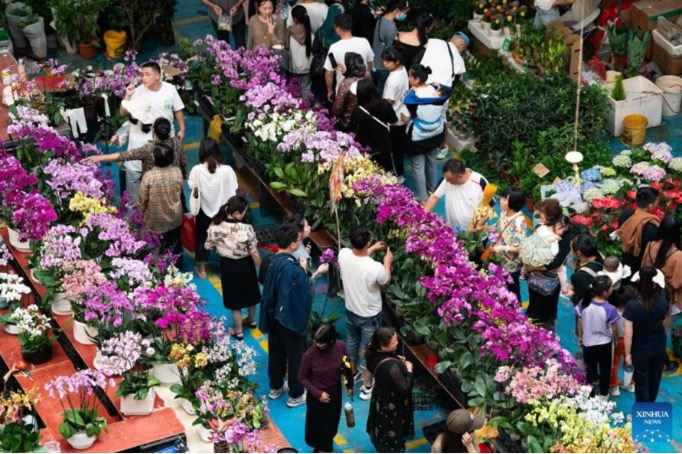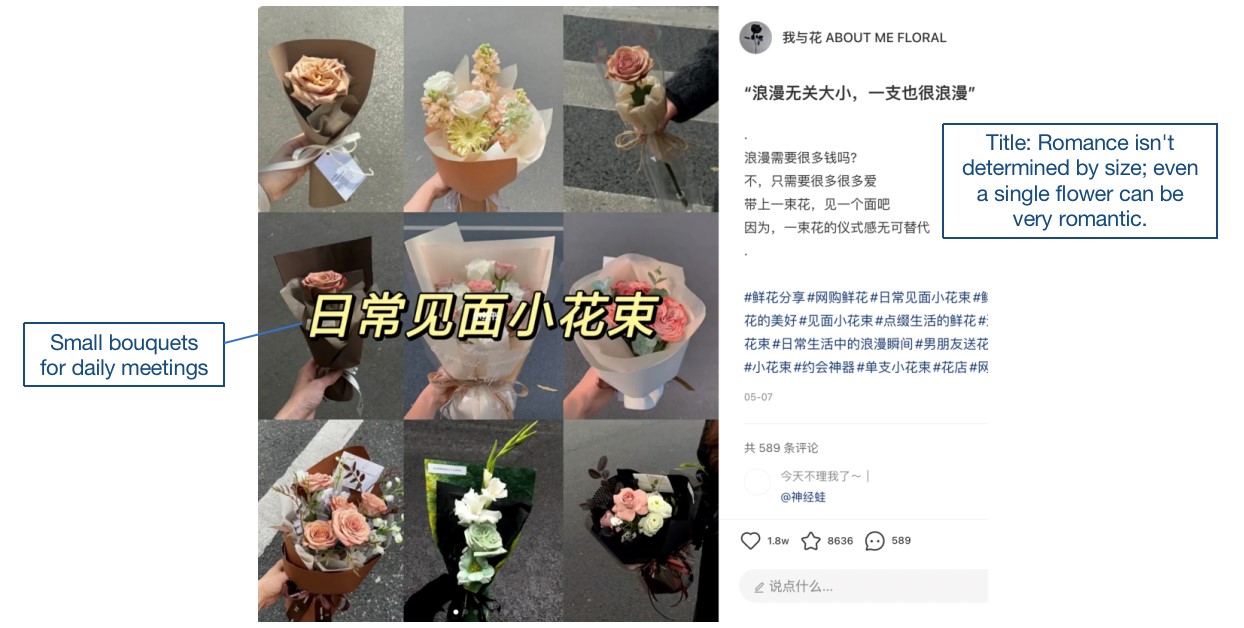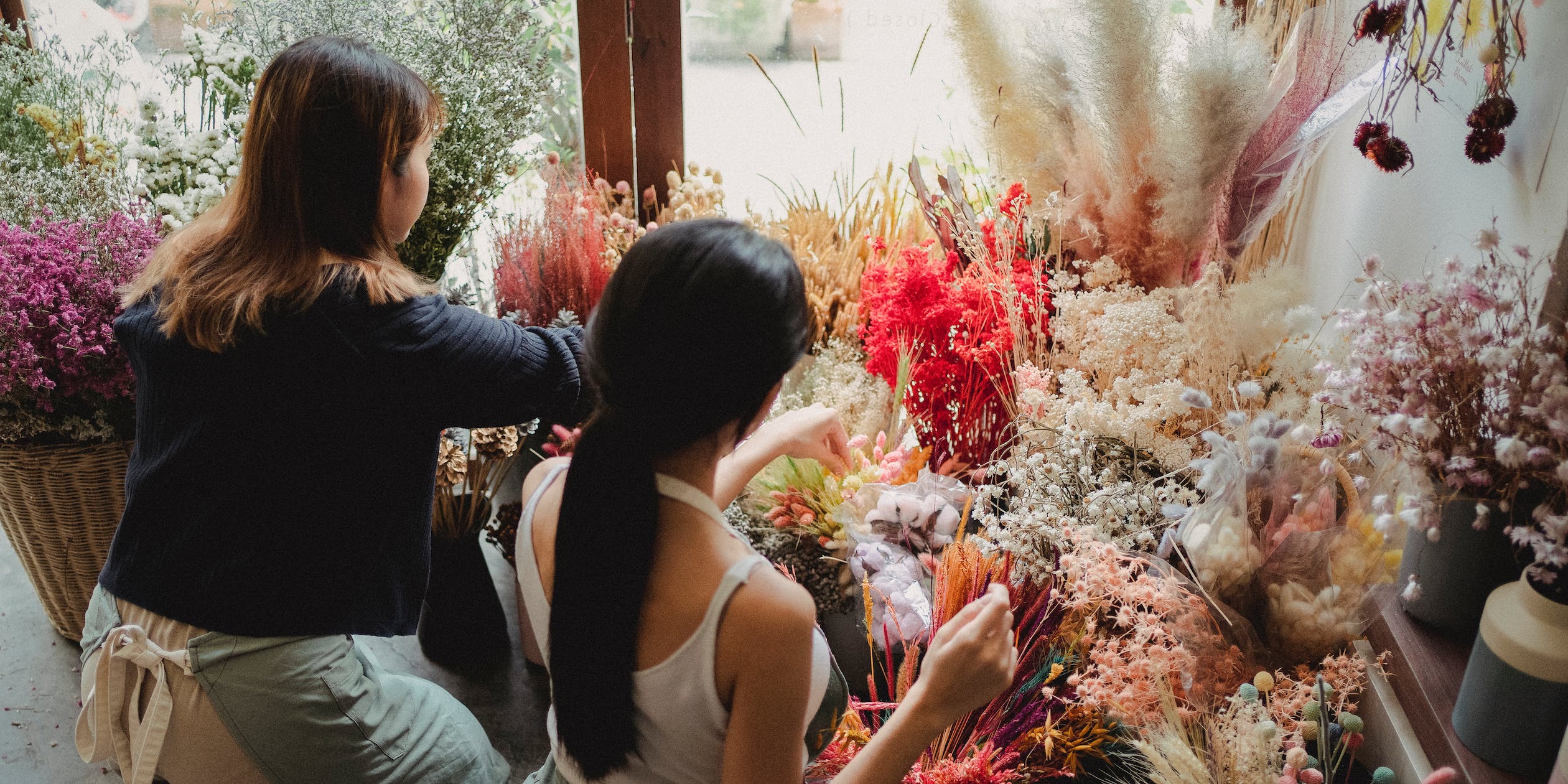The Chinese flower industry has experienced notable changes in consumer behavior post-COVID. While traditionally, flowers were primarily purchased for festivals and celebrations, there’s been a noticeable shift towards buying flowers on regular days to infuse romance into their daily life.
Moreover, in 2023, there has been a surge in fresh-cut flower sales, and the Chinese cut flower market is expected to have a Compound Annual Growth Rate (CAGR) of 12.9% between 2023 and 2029. These shifts indicate an evolving consumer approach towards flowers beyond mere special occasions. According to the Merger and Reorganization Opportunity Research report, the current value of the Chinese flower market stands at USD 17.2 billion (RMB 125.9 billion). Projections indicate that it is expected to achieve a considerable rise, reaching USD 30.4 billion (RMB 222.5 billion) by the year 2023.
Download our report on the She Economy in China

China’s flourishing flower trade: exports from Yunnan and growing imports
The main location for flower production in China is Yunnan province. The floral industry in Kunming, Yunnan’s capital, has evolved into one of the world’s top three flower-producing regions. In 2022, the city’s flower transaction volume reached RMB 35.6 billion, with e-commerce sales consistently growing by over 20% annually. Kunming flowers have gained global recognition, being exported to over 60 countries, accounting for over 40% of the country’s fresh-cut flower exports.

In addition to its extensive export activity, China is also actively involved in the import of flowers. Customs statistics from 2022 show that flower imports totaled nearly USD 234 million, marking a modest 0.68% decrease compared to the previous year. These imports originated from 58 countries and regions, with major contributors such as the Netherlands, Japan, and Thailand, collectively representing approximately 75% of China’s total flower imports.
Cultural significance of flowers in Chinese tradition
Flowers in China bear profound cultural significance, symbolizing values like wealth, honor, and prosperity. This symbolism extends to practices like feng shui, where they are believed to bring good fortune through their positive energy.
Within the Chinese flower industry, thriving involves customizing the inventory to suit various cities, festival periods, and market segments. Gifting flowers has become popular, and the trend of using them as integral decorations for events and hotels has also grown significantly.
Flowers play a significant role in traditional weddings, where great care is taken in selecting flowers with cultural significance. For instance, white flowers, associated with death, are avoided during celebratory events. The choice of flowers remains deeply influenced by their cultural connotations, emphasizing the importance of aligning floral offerings with these rich traditions.
Floral rituals: Redefining daily well-being with blooms
Recently, platforms like Xiaohongshu (XHS) have highlighted the importance of well-being and the “sense of ritual” (仪式感), influencing flower consumption. This change encourages incorporating flowers into daily life, enhancing personal satisfaction. The view on flowers has evolved from being considered only as gifts or reserved for special occasions to people buying them for personal enjoyment. This trend aims to boost personal happiness and enrich life quality by emphasizing the contentment that flowers bring to daily life.

This trend is evident in the popularity of hashtags such as “flower for the week” [每周一花] with over 392.1 million views and “Enhancing Life with Flowers” [点缀生活的鲜花], with more than 2.4 billion views. This trend showcases a shift in how people perceive and utilize flowers. They focus on personal enjoyment, self-expression, and the promotion of improved quality of life through a more ritualistic and daily appreciation of floral beauty. Since well-being and a sense of ritual are trending topics on XHS, the Chinese flower industry may continue to thrive in the near future.
A blossoming renaissance: small flower shops, street stall revival, and online market surge
The flourishing resurgence of small flower shops in Chinese cities
An increasing number of small flower shops are cropping up across city streets in China. According to search results on Baidu Maps, there are 146 registered flower shops in Shanghai and 145 in Beijing, indicating a notable presence. This surge is significant, particularly given the closures experienced by numerous flower shops during the COVID-19 period. The resurgence of many new flower shops signals a growing trend in the industry.

China’s post-pandemic street stall renaissance sweeps the nation
After the pandemic, the street stall economy has revived across China. Many cities have eased restrictions on stall setups, leading to the rise of night market street stalls. Young entrepreneurs are taking to the streets to sell food, handicrafts, and flowers. The emergence of car trunk markets has also attracted many young entrepreneurs to this trend. However, these new stall owners differ from the traditional “street stall” image. They focus on creating an inviting atmosphere, presenting sophisticated stalls, and using social platforms like Xiaohongshu and Douyin to expand their influence.
Data from Xiaohongshu shows a 288% increase in posts featuring the keyword “street stall” from January to September 2022 compared to the same period in 2021. For the younger generation, running a stall is seen as a viable entrepreneurial opportunity, with its low entry barriers. This is exemplified by the growth of on-the-go bouquet vendors selling ready-made bouquets or single flowers along roads.
Exploring the online boom in China’s flower market
Beyond the brick-and-mortar shops and vendors, the online flower market has witnessed notable success. The onset of the pandemic in 2020 impacted offline flower consumption, prompting flower e-commerce enterprises to seek new avenues for growth. Dingdong Maicai unveiled its flower business in November 2020, with Ele.me, the delivery app, following suit in March 2021. The current flower e-commerce landscape is primarily composed of three categories: traditional e-commerce, vertical flower e-commerce, and fresh food e-commerce. The flower e-commerce market size was RMB 16.88 billion in 2016. It is expected to reach RMB 164.4 billion by 2025, with the continuous advancement of e-commerce and express delivery industries.
Floral finesse: navigating the evolving dynamics of Chinese flower industry
- Chinese consumers have shifted their flower purchasing habits post-COVID. They are moving from special occasions to everyday life to infuse romance and well-being.
- The Chinese fresh-cut flower market is on the rise, with a projected CAGR of 12.9% between 2023 and 2029, reflecting changing consumer preferences.
- Yunnan province, particularly Kunming, has become one of the world’s top three flower-producing regions, significantly impacting global fresh-cut flower exports.
- China actively engages in both flower exports and imports. It maintains a robust floral trade with countries such as the Netherlands, Japan, and Thailand.
- Flowers hold cultural significance in Chinese tradition. The trend of integrating them into daily life for personal enjoyment and well-being is thriving, contributing to a prosperous floral industry.




